Kizashi puts Suzuki into the vanishing midsize flow
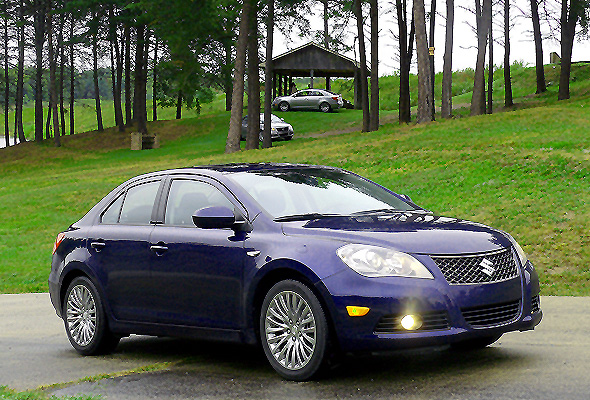 RALEIGH, N.C. — The efficient combination of design, quality, engineering, efficiency, and economy of purchase and operation has thrust Japanese cars to the level of world standard. But it also stirs up a couple of intriguing questions. First question: If Toyota is the largest-selling car marque back in Japan, what brand is second in sales in the homeland? The second question is: Why is Japanese engineer Hidetoshi Kumashiro wearing a ball cap with “Minnesota” emblazoned in script on the front?
RALEIGH, N.C. — The efficient combination of design, quality, engineering, efficiency, and economy of purchase and operation has thrust Japanese cars to the level of world standard. But it also stirs up a couple of intriguing questions. First question: If Toyota is the largest-selling car marque back in Japan, what brand is second in sales in the homeland? The second question is: Why is Japanese engineer Hidetoshi Kumashiro wearing a ball cap with “Minnesota” emblazoned in script on the front?
For the first question, which would you rank second to Toyota in car sales in Japan: Nissan, Honda, Suzuki, Mazda, or Subaru? If you guessed Honda, you might be judging by U.S. sales, where Honda challenges Toyota. If you said Nissan — as I would have — you would be close, because a decade ago, Nissan was second. Nope, the correct answer is Suzuki.
Suzuki makes numerous subcompact and compact cars in Japan, and they sell well because the company’s uncompromising engineering and enthusiastic leanings makes the cars fun to drive, something U.S. consumers and race fans might know best from Suzuki’s motorcycles. It is time, perhaps, for Suzuki to come of age in the U.S., and the perfect vehicle to take the company to its objective in this country is an all-new car called the Kizashi.
The Kizashi, once test-driven, will be as surprising to U.S. consumers as the news that Suzuki is No. 2 only to Toyota in Japan. The new car lives up to its name, which, loosely translated, means something very good is coming. The Kizashi is very good indeed, regardless of what type of car you’re interested in. It is not a soft, squishy little commuter car, but a bold and aggressive sports sedan that will bring a smile to the face of driving enthusiasts, and will astound drivers of more boring sedans who never will be subtly coaxed into learning how much fun everyday driving can be.
As for the second question, about why Hide Kumashiro is wearing a Minnesota cap, I asked him where it came from. “The airport,” he said, grinning broadly. Kumashiro is the chief engineer on the Kizashi, and as if to validate the new car’s stature as a thoroughbred, the company did its cold-weather testing in Minnesota. Great choice. Just as impressive as the fact Suzuki went to Death Valley, Calif., for hot-weather tests. Maybe Suzuki would have listed all-wheel drive as an option anyway, but after testing in Minnesota winters, there was no question about it, and AWD is a mere $1,250 option on all models with the automatic CVT (continuously variable transmission). Otherwise, the Kizashi is powered by its 2.4-liter 4-cylinder turning the front wheels.
Suzuki has never made a midsize car before, and it knows how ferocious the competition is in that segment. Maybe it was fortunate timing, but Suzuki comes in just as nearly all its midsize rivals seem to be abandoning the segment. Every company has tried to make its midsize cars more fun to drive, but the only ones to have mastered it seem to be BMW, Audi, and maybe Mercedes and certain models of Volkswagen. Gene Brown, Suzuki’s vice president of marketing, said, “Normally, you have to spend some serious money to get a sporty car in that segment. But the dynamic excitement of a German car, the Kizashi has premium handling, premium performance, and premium craftsmanship, without the premium price. We like to say it is a ‘Premium car without the premium.’ ”
I think such mainstream midsize cars as the Honda Accord, Toyota Camry, Nissan Altima and Mazda6, all are very good vehicles, brimming with technical excellence and all the newest features, and with enormous amounts of room. It is a measure of achievement that the Ford Fusion and Chevrolet Malibu have improved enough to compete with them. But as they all swam upstream from midsize mainstream, I’ve come to appreciate their predecessors more than ever. In the process of growing larger in the last couple of years, to nearly full-size roominess. they left behind the better agility of lighter, leaner vehicles, pretty well abandoning the pursuit of sportiness.
All the better for the Suzuki Kizashi, which fits right in there where those “former” midsize cars were, and will allow all its drivers to be more enthusiastic in a strong, solidly-built 4-door sedan closer to perfect size.
The Kizashi also slides in under those rivals that have gone up over $30,000 in many cases. The Kizashi will start under $20,000 in base form, with a high-strength steel skeleton under its sheet metal, and a potent 2.4-liter 4-cylinder engine under its hood. Next up is the SE, with standard continuously-variable automatic transmission and larger 17-inch wheels, for $21,500. Suzuki officials project the SE as the top seller. A sportier GTS with 18-inch wheels is also available. At the top of the line is the SLS, with leather seats and trim, 3-stage heated seats, rear parking assist, and other upgrades, all packaged in for $25,500 — well under the loaded versions of all its competitors.
The Kizashi was introduced first to the automotive media at a test-drive session that started in Raleigh-Durham, and continued as we drove to Virginia International Raceway, and then back. While at VIR, we took the Kizashis out on the road-racing course and ran them through some comparison tests for handling and emergency maneuvers against such cars as the Accord, Camry, Altima, Subaru, and even an Acura TSX, Volkswagen Passat, and an Audi A4.
In every case, the Kizashi handled itself with smooth precision. Or, rather, we handled the Kizashi and were universally impressed with how precise its steering and handling was, and how well it outperformed the other cars. Granted, those weren’t the highest-performance models of the competitors, but the point is, even the base Kizashi is built for high-performance handling, without ever compromising its comfort. Swerving through a slalom of cones, cutting sharply in a sustained-speed lane-change, and going through altered cone-lined sections of the race track all made the Kizashi stand out.
{IMG2}
When we were finished, they cleared the cones off the racetrack and we went out on the track and drove some hot laps as though we were out of our helmeted heads. At 3,250 pounds, the Kizashi’s KYB shocks and multilink rear suspension coupled with the car’s very firm torsional rigidity from use of high-tensile-strength steel, made it stay flat and easily controlled in every race track corner, just as it had in the slaloms and lane-change exercises.
In the U.S., Suzuki motorcycles stand out from road cruiser to off-road, motocross and road-racing jewels of mechanical excellence. Suzuki also builds exemplary outboard motors. Most U.S. consumers barely knew Suzuki even made cars, and if it hadn’t been for its alliance with General Motors, for whom it produced the Geo Metro and the Tracker, almost nobody would know it.
Never mind that Suzuki made and sold its subcompact Sprint in the U.S., even while the Metro was selling at the Chevy dealer down the block. While Suzuki made its 3-cylinder Metro as the best high-mileage car ever sold by GM, the Sprint had a 4-cylinder, high-performance model that car was a blast to drive, and still got fantastic fuel economy.
The only exceptions to Suzuki’s enthusiast heritage might be the rebranded — and fortunately short-lived — Korean-built Daewoos that General Motors allowed Suzuki to sell as the Verona and Forenza for a few years. My favorite Suzuki in recent years is the SX-4, a little 4-door hatchback with all-wheel drive that is the perfect challenger to the harshest winter foul-weather driving, and costs well under $20,000.
Hide Kumashiro, the chief engineer, noted that Suzuki had built a very strong 2.0-liter 4-cylinder engine for the SX4, and redesigned it for more power for the Grand Vitara compact SUV a year ago. That 2.4 is refined again for the Kizashi, with variable valve-timing on both intake and exhaust valves, a counter-balancing system to eliminate vibration, a redline of 6,800 RPMs, and 185 horsepower in 6-speed manual form, or 180 horses with the CVT and its steering-wheel-mounted remote paddle-shift levers.
The 3,250-pound front-drive version has EPA estimates of 23 miles per gallon city and 31 highway, with the AWD models at 22/30. Befitting a car Suzuki officials say is the most important in the company’s history, the Kizashi comes with a 100,000-mile warranty, and has a unique all-wheel-drive system with an electronic clutch pack that shifts the power to the axle with the best traction before traction is compromised, operating by computer combined throttle input, steering angle, and the integrated stability control.
Kizashi meets 2014 crash-test standards, with eight airbags, antilock brakes, and electronic stability control, and its durability is enhanced by an anti-corrosion zinc alloy steel underbody, plus a resin cover under the sidesills and door panels. Additional attention to minimize road and wind noise has gotten the Kizashi rankings better than such stalwarts as the Acura TSX and Mazda6, and along with soft-touch paneling and sound-proofing, occupants are treated to premium leather options, backlit instruments, and 3-stage dual climate control. That makes it nice and quiet, so you can converse easily, or listen to brilliantly sharp sounds from the optional 425-watt Rockford Fosgate audio system.
From a design standpoint, first glance at the well-styled Kizashi is remindful of a Nissan Maxima or Altima, only curving in a more compact version. Suzuki officials take great pride in the Kizashi being voted to the final listing for 2010 North American Car of the Year, and they anticipate it will be surprisingly competitive for anyone wanting an elite performance sedan at a comparative bargain price. Suzuki put an unbadged Kizashi on display in a blind public survey, and many observers guessed that it was built by Audi or Acura or some other premium manufacturer. But no, it was built by the car-maker that is “only” No. 2 in Japan’s market, and which hopes to ride in swift comfort onto serious inroads in the U.S. midsize market.
Minnesota’s ‘First Finn’ shuts down UMD women
 Goaltending is not a shortcoming for the University of Minnesota women’s hockey team in this Olympic-depleted WCHA season, with returning sophomore Alyssa Grogan and junior Jenny Lura back and ready to go, So when coach Brad Frost decided to go with freshman Noora Raty in the Gophers big intrastate series against Minnesota-Duluth, it seemed curious at the outset.
Goaltending is not a shortcoming for the University of Minnesota women’s hockey team in this Olympic-depleted WCHA season, with returning sophomore Alyssa Grogan and junior Jenny Lura back and ready to go, So when coach Brad Frost decided to go with freshman Noora Raty in the Gophers big intrastate series against Minnesota-Duluth, it seemed curious at the outset.
It didn’t seem curious for long, as Raty allowed only one goal in a 3-1, 3-0 sweep over the Bulldogs at Ridder Arena — a sesries that might prove pivotal if the Gophers are to ultimately win the WCHA championship this season. Raty’s instant stardom at Minnesota emerged from two factors: Frost’s decision to go overseas to recruit for the first time, plus Finland’s decision to not centralize its 2010 Olympic team.
Minnesota, UMD, and perennial contender Wisconsin all lost key players to the standing national teams of the U.S., Canada, and Sweden, when the hockey federations from those three nations decided to gather their players for season-long training. Interestingly, the only previous time any women’s team was centralized was when the U.S. won the first-ever Olympic competition in 1998 at Nagano, Japan, and the U.S. cloistered its players at Lake Placid. After a long season that glowed with victory after victory, including repeated triumphs over Canada’s occasionally-assembled team, the U.S. brought its undefeated team to Mariucci Arena for the 1999 World Championships, where it lost to Canada in the gold medal game. So Team USA won every game it played, except the one it played the whole season to win.
This, then, is only the second time Team USA chose to spend the whole season together, and Canada and Sweden decided to do the same. Finland, however, chose to not centralize its players. After upsetting Sweden to win the bronze behind the traditional 1-2 of the U.S. and Canada last spring, Finnish officials realized that at this stage of women’s hockey, any national team would be hard-pressed to find regular competition that could match the intensity of WCHA games week after week.
Finland hockey officials were eager to have Raty and defenseman Mira Jalosuo come to Minnesota as freshmen, and Mariia Posa, another freshman defenseman, joined junior captain Saara Tuominen at UMD. They are not alone. Raty earned WCHA defensive player of the week honors for her play against UMD, and MSU-Mankato sophomore Emmi Leinonen was offensive player of the week with three goals and an assist last weekend, while freshman Minttu Tuominen of Ohio State was rookie of the week. So while Team USA took a well-deserved week off, three of Team Finland’s players were sweeping the weekly WCHA awards with exceptional performances.
Incidentally, Gopher sports information specialist Michelle Traen may also deserve all-WCHA status this season, because after dutifully putting out pronunciation guides for such names as Wendell, Darwitz, Curtin, Brodt, and Marvin over the last decade, she now must convince the media that Noora is “NEW-rah,” but Raty is actually pronounced “RAH-too.”
Until this season, the pronunciation challenge has mostly gone to UMD, because of coach Shannon Miller’s decade-long skill at recruiting elite European players to Duluth. This is Minnesota’s first venture “across the pond.” Along with Posa from Finland, Miller brought in Jennifer Harss, a skilled German freshman goaltender, and she also knew all about Raty, having tried to recruit her before Raty chose Minnesota over UMD and Ohio State.
The Bulldogs don’t need a pronunciation guide to remember Raty. The image of her, positioned low, with her glove held high, and the puck ensnared within, should be indelibly burned into their memories, at least until their rematch series in early February in Duluth.
Raty gloved all of the toughest UMD shots, and got her pads in the way of almost all the rest, making 22 saves in the first game and blocking all 29 in the second. She was beaten only when UMD senior Emmanuelle Blais knocked in a loose puck during a scramble in the first game, and that came with only 0 minutes left, and with Minnesota having three goals on the board. Raty wound up with 51 saves on 52 shots against the team most consider the Gophers top challenger this season.
Minnesota dominated the first two periods of the first game, but after rallying in the third period the first night, UMD played the Gophers evenly through two periods in the second game. “They started the way they finished the first game…and so did we,” said Frost. “Fortunately, when we were at our worst, Noora was at her best.”
Tuominen, UMD’s smart, hard-working center, is also the captain of Finland’s national team, and she was victimized by her future teammate on two first-game bullets high into Raty’s glove.
“I know Saara very well because she is captain of our national team,” said Raty, after the first game. “I’m enjoying playing college hockey, because I love playing when there is pressure. They started getting some shots in the last 10 minutes. Saara always tries to score on me in national team practice, and usually she tries to beat me high to the glove side. So I was anticipating that she’d shoot there.”
She couldn’t have anticipated that almost all the Bulldogs, while playing much for forcefully in the second game to trail only 1-0 after two periods, all seemed stubbornly determined to also shoot high to the glove side. UMD coach Miller knew all about Raty’s glove, and specifically provided video-enhanced evidence before the second game to indicate why the Bulldogs shouldn’t shoot high on Raty’s glove side. It didn’t work.
“The Gophers have the best talent in the league, and they’re much bigger and stronger than our players,” said Miller. “After the [second] game, our team was exhausted, but I told our players I was proud of how hard they played, and I thought we were the better team for the first two periods. But I also asked how many had followed the plan to shoot low, and only one player said, ‘I did, once.’ ”
In past years, the scenario of UMD’s success against the Gophers, and the propulsion for the Bulldogs’ unsurpassed four NCAA championships, has been the ability of Miller to recruit sensational goaltenders from across the Atlantic. The UMD goalie record book shows students from Finland (Tuula Puputti), Switzerland (Patricia Sautter and school victory and save record-holder Riitta Schaublin), and Sweden (Kim Martin) — each of whom led UMD to national championships while also starring for their homeland national teams. This season, with Martin gone to the gathered Swedish team, Miller landed Harss, a very skilled goaltender from Germany, who played well while being thoroughly challenged by 75 shots for the two games at Minnesota, and it might have been worthy of a weekly award if Raty hadn’t completely shut down the Bulldogs offense.
{IMG2}
The Gopher attack was alive in the first game. Anne Schleper’s first-period goal, Terra Rasmussen’s in the second, and a power-play goal by Sarah Erickson in the third — which gave her a nation-leading 6 goals at the time — was a minimal reward for Minnesota’s dominance. In the second game, the Bulldogs played much more assertively, but were done in by their inability to get past Raty, and also by their own power play. Emily West scored the game’s first goal on a shorthanded breakaway midway through the second period, and, after Kelli Blankenship found a rare opening in goal-mouth congestion to score early in the third, Chelsey Jones scored on another shorthanded breakaway to seal the 3-0 verdict,
Frost tried to brush aside any talk of his Gophers zooming into the favorite’s role, with Wisconsin having lost early games to both North Dakota and Bemidji State, and now UMD harnessed with two losses too, while the Gophers stand 4-0 atop the league.
“It’s still early,” Frost said. “The thing I love about us is that we’re a great TEAM. We have players like Sarah Erickson, who have been put into a role she didn’t need to play before, and has scored so well. But we expect everyone to contribute, and we’re going with three lines and six defensemen, and letting the game dictate.
“Our goaltending situation is interesting, and we’ll continue to evaluate it. Grogan played early, and Noora looked good, and then Noora played so well in practice, I decided to start her against UMD. I’m really happy for her to get a shutout. Not because a shutout was so important to her, but she doesn’t like to get scored on.”
Newest Golf offers advanced turbodiesel
WOLFSBURG, Germany—Our Volkswagen Golf TDI was sailing along the E-30 stretch of Germany’s network of autobahns, from Wolfsburg toward Dresden, and since I was driving, I appreciated the smoothness. In a half-dozen previous opportunities, I have always enjoyed the chance to drive quality cars at the unrestricted speed limits, and this was more of the same.
As I glanced at the instruments, something seemed restrictive, however. Having grown accustomed to the metric instruments of European cars, I knew that when you get to an astronomical figure of kilometers per hour, you may be getting up there in miles per hour as well. For instance, 210 km. per hour is about 135 mph, and 245 km. per hour is about 150 mph. While the little 2.0-liter 4-cylinder turbo-diesel engine in our 2010 Golf had tremendous low-end power, it was just about out of power. With the speedometer indicating 125, I figured it wasn’t much over 70 mph, so our feeling of speed must be an illusion, because we cruise at 70 mph on U.S. freeways.
I mentioned it to my co-driver, because the scenery was passing by pretty swiftly, so we checked the speedometer again. Sure enough, while we were trying to calculate from metric, the Germans had given us a Golf with its speedometer in miles per hour. We got a good laugh out of cruising along at 125 mpg, and complaining about not having more power!
The Golf is in its seventh edition for the 2010 model year, and, as usual, its changes are evolutionary rather than revolutionary. Switching to a horizontal grille in a more rounded frontal area improves aerodynamics, with refined edges and seams all around, the key to the new car is its technology. That is the reason the new Golf is one of the finalists for the North American Car of the Year competition, and, indirectly, the reason Volkswagen invited a selection of North American auto journalists to try the new Golf in its homeland.
As tours go, this one was fantastic. We flew to Hanover, then drove to Wolfsburg, which is dominated by Volkwagen’s Autostadt — a city within the city that houses Volkswagen’s factory, distribution, museum, and sales headquarters. From Wolfsburg we drove to VW’s test facility to drive some of the vehicles available in Europe but not yet in the U.S., and sampled some soon-to-come models, such as a hybrid with an electric system linked to a small turbo-diesel, which is certain to get something in the ballpark of 100 miles per gallon. There is also a plug-in hybrid, which, VW says, will be available within a year.
The next day we drove from Wolfsburg to Dresden, to visit another assembly plant where the luxury Phaeton — no longer brought to the U.S. — is put together by hand. After that tour, we drove northward on E-65, another autobahn, to Berlin. We only had an hour and a half of free time in Berlin, and I wished it was much more because it is such a beautiful, classical and mysterious city.
During the trip, there was ample opportunity to listen to presentations by Volkswagen executives, as there was to drive different vehicles, and the overall intention was clearly to show us all the direction Volkswagen is going for its future in the North American marketplace.
Diesel technology is a key. Diesels provide more torque than much larger gasoline engines, and turbocharging increases the power to more usable acceleration and U.S.-like quickness. But American consumers are fickle, and their desire for such superb, fuel-efficient technology seems directly traceable to the cost of gasoline. When it goes up past $3 a gallon, high-mpg cars sell like popcorn; as soon as fuel prices drop to the lower $2 range, people seem to think they can get by with less-fuel-efficient vehicles. VW is focused on a leaner and cleaner future.
“The key word is downsizing, and I don’t mean just small, but powerful,” said Dr. Hermann Middendorf, the head of engine development. “By the reduction of displacement and the number of cylinders, combined with direct injection and turbocharging, we can get more power with less consumption.”
The 2010 Golf retains the 2.5-liter 5-cylinder engine, which has been upgraded significantly with direct injection, and the 2.0 turbo-diesel, which comes either with a 6-speed manual or the DSG. “The DSG shifts at lower revs,” said Middendorf. “We have gotten a 20-percent improvement with our new engines, and an additional 10 percent with the DSG.”
Middendorf indicated that along with the 3.0-liter V6 turbo-diesel in the Touareg SUV, the available 2.0 turbo-diesel in the Jetta and now the Golf in the U.S., will be joined by smaller turbo-diesels in the near future — engines that already are available in Europe, where consumers are more consumed with high gas-mileage vehicles as well as durable and potent machines.
VW has 1.6 and 1.4 liter turbo-diesels already running in Europe. The 1.4 has been selling well since 2006, and the 1.4 and 2.0 have won European engine-of-the-year honors for four straight years. New on the market in Europe and Asia is a 1.2-liter.
German car-makers are as far advanced in diesel technology as the Japanese are in hybrids. It might be most effective to combine the two, and VW, along with Audi, which it owns, might be taking the lead in combining the two. At the Frankfurt auto show in September, VW displayed a new 1.2-liter, 3-cylinder turbo-diesel hybrid. Another car, for display only, had a 0.8-liter 2-cylinder turbo-diesel — essentially half of the 1.6-liter 4-cylinder — connected to an electrical system for a 108-horsepower hybrid.
Audi’s technology includes the 2.0 turbocharged gas engine and the direct-sequential-manual transmission — a clutchless unit that has two clutches internally, gripping alternating gears and shifting smoothly and instantaneously. That DSG (direct sequential gearbox) has been a huge element, along with the direct injection and turbocharging, in achieving sensational fuel economy as well as surprising power for the smaller Volkswagen engines.
Volkswagen is clearly focused on the future. It used to have a commanding share of U.S. import sales, and while that has faded in recent years, VW continues to dominate markets in Europe, China, Central America and South America, and Dr. Joakim Heizmann said VW is determined to regain its solid market share in the U.S. as well.
“We are investing $1 billion in our new Chattanooga, Tenn., plant, and we will offer 2,000 new jobs there,” said Heizmann. “We believe we have a prominent future in the U.S., and the centerpiece of our strategy is to build fascinating cars for the needs and dreams of American drivers.”
To that end, VW has secretive plans to bujild a new midsize sedan, beyond the Jetta and Passat, to be introduced as a 2011 model. It will be built in the soon-to-be-completed Chattanooga plant, and aimed exclusively for the U.S. and Canadian markets.
Now if we can just find a good stretch of rural freeway and convince the government to eliminate speed limits.


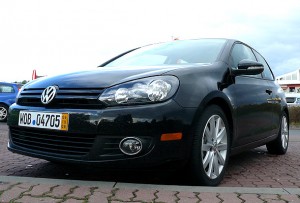
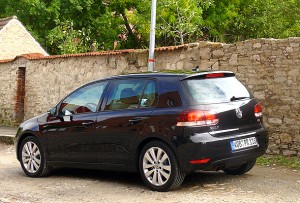
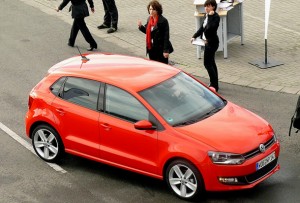
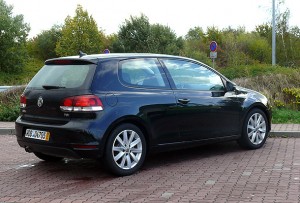
 John Gilbert is a lifetime Minnesotan and career journalist, specializing in cars and sports during and since spending 30 years at the Minneapolis Tribune, now the Star Tribune. More recently, he has continued translating the high-tech world of autos and sharing his passionate insights as a freelance writer/photographer/broadcaster. A member of the prestigious North American Car and Truck of the Year jury since 1993. John can be heard Monday-Friday from 9-11am on 610 KDAL(www.kdal610.com) on the "John Gilbert Show," and writes a column in the Duluth Reader.
John Gilbert is a lifetime Minnesotan and career journalist, specializing in cars and sports during and since spending 30 years at the Minneapolis Tribune, now the Star Tribune. More recently, he has continued translating the high-tech world of autos and sharing his passionate insights as a freelance writer/photographer/broadcaster. A member of the prestigious North American Car and Truck of the Year jury since 1993. John can be heard Monday-Friday from 9-11am on 610 KDAL(www.kdal610.com) on the "John Gilbert Show," and writes a column in the Duluth Reader.